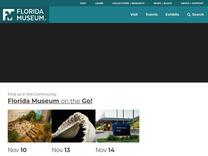Are shark teeth fossils true fossils? – Research News https://www.floridamuseum.ufl.edu/science/are-shark-teeth-fossils-true-fossils/
We get questions like this a lot. This question came by tweet. We turned to Richard Hulbert, Florida Museum’s vertebrate paleontology collection manager, for a concise answer. The short version: The shark teeth found in Gainesville creeks are true fossils as that term is used by paleontologis
Most fossil shark teeth in local creeks are about 9-10 million years old, and there

